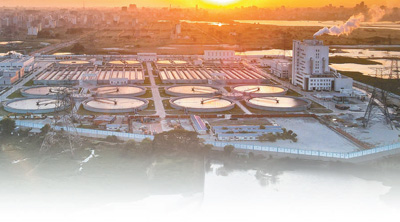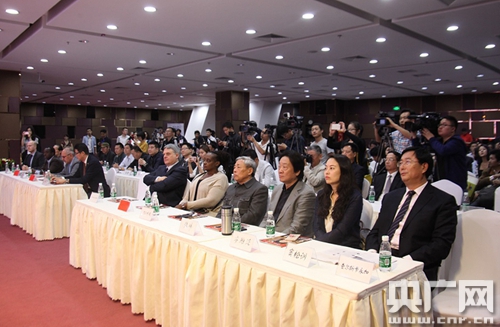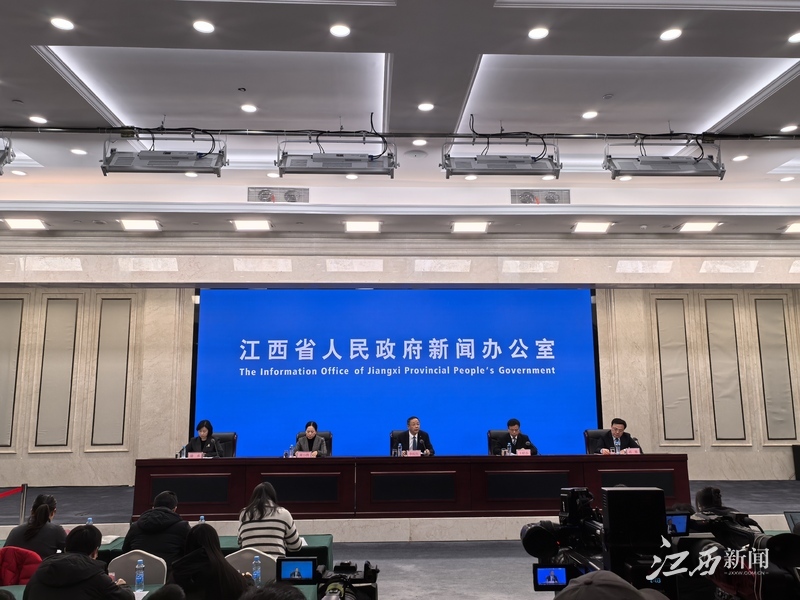Jiangsu Will Do This In Implementing Major National Development Strategies!
Jiangsu Will Do This In Implementing Major National Development Strategies!
A large economic province is not only reflected in its economic size, but also means the responsibilities and missions shouldered in the overall national development. How can Jiangsu "take the lead" and "take the lead" in implementing major national development strategies? The answer is written in solid measures
A large economic province is not only reflected in its economic size, but also means the responsibilities and missions shouldered in the overall national development. How can Jiangsu "take the lead" and "take the lead" in implementing major national development strategies? The answer is written in solid measures and reflected in the vivid practice of regional coordinated development.
On September 29, the Provincial Government Information Office held the third press conference on the series of theme news release activities "Resolutely shoulder the responsibility of the economic province to shoulder the main responsibilities" - "Lead ahead in implementing major national development strategies". The reporter learned from the meeting that Jiangsu insisted on taking the implementation of the major national development strategy into the overall strategic situation of Chinese modernization, implemented the major national development strategy with high standards, enhanced the radiation and driving force for the whole country with high standards, shouldered the responsibility of taking the lead in economic provinces with high quality, and handed over a "Jiangsu answer sheet" that demonstrated responsibility and showed action.
Strengthen muscles and bones, paint the background, and build a solid foundation for Jiangsu's high-quality development
The implementation of major national strategies cannot be separated from a solid development foundation as support. The realization of high-quality development is inseparable from the "hard support" of modern infrastructure and the "soft power" of beautiful ecological environment. On the one hand, Jiangsu will accelerate the construction of a modern comprehensive three-dimensional transportation network, and on the other hand, it will comprehensively promote the construction of a beautiful Jiangsu. It will serve the overall situation of the country and build a responsibility in every specific project and every green transformation.
Transportation is the "pioneer" in economic development. Jiangsu uses the construction of major projects as a starting point to open up the development artery.
In recent years, the intuitive feeling of the traffic network becoming more dense is that many people have. At the venue, a set of data gave a more intuitive explanation: During the 14th Five-Year Plan period, the province's transportation infrastructure construction is expected to be invested in more than 1 trillion yuan, which is 1.6 times that of the 13th Five-Year Plan.
Ling Yaochu, a first-level inspector of the Provincial Department of Transportation, proudly said that our province seized major national strategic opportunities and continued to improve the modern comprehensive three-dimensional transportation network. At present, the province has built a total of 20 cross-river channels and 9 under construction. The province has a high-speed railway mileage of 2,594 kilometers, and the area density ranks first in all provinces and regions. The province has 2,664 kilometers of third-level and above waterways, ranking first in the country. The scale of Jiangsu ports is also leading in the country, and multiple indicators are ranked first in the country. The layout of the 9 transportation airports planned in the province has been fully implemented, achieving a 90-minute drive from ground transportation to cover all counties (cities). "In the next step, we will continue to plan and build a number of major engineering projects, increase efforts to connect the comprehensive transportation channel, promote the renewal of existing transportation infrastructure, improve quality and efficiency, and better serve and ensure the circulation of the national economy and the convenient travel of the people."
Ecological protection is Jiangsu's conscious action to resolutely fulfill its national green commitment. Our province insists on taking the construction of a beautiful Jiangsu as the driving force, accelerates the comprehensive green transformation of economic and social development, coordinates the promotion of carbon reduction, pollution reduction and green growth, and strives to support high-quality development with a high-quality ecological environment.
Qian Jiang, deputy director of the Provincial Department of Ecology and Environment, introduced that our province vigorously promotes green and low-carbon development and continuously improves the quality of the ecological environment. From January to August, the PM2.5 concentration in the province was 31.3 micrograms per cubic meter, and the water quality of the national examination section was 92.4%, and the water quality of the Jiangsu section of the main stream of the Yangtze River has remained Class II for seven consecutive years, and the proportion of the major tributaries is 100%. At the same time, Jiangsu continues to improve the urban green space system, with a green space rate exceeding 40%, a per capita park green space area exceeding 16 square meters, and deepens the reform of the ecological civilization system. Promulgate and implement local regulations such as the Jiangsu Province Ecological Environment Protection Regulations, and issue provincial ecological environment standards as the number of provincial ecological environment standards is leading in the country.
Integrate the overall situation and promote opening up, and demonstrate Jiangsu's strength in serving the national strategy
"What should be taken advantage of is the momentum, and the time should not be lost." If the internal muscles and background color are the internal strength of Jiangsu's development, then, looking at the whole country and even the world, Jiangsu's more important mission lies in how to integrate its own development into the rivers, lakes and seas of the national strategy.
It not only brings glory to a region, but also adds color to the overall situation. Our province fully utilizes the superimposed advantages of Jiangsu's "Belt and Road" construction, the development of the Yangtze River Economic Belt, and the integrated development of the Yangtze River Delta, and actively explores new paths for cross-strategic coordination, cross-regional factor sharing and industrial interaction.
In July, the "Ice Silk Road" Arctic route achieved its maiden voyage at Lianyungang Port, becoming a key supplementary channel for Asia-Europe trade. Wu Gangyu, member of the Standing Committee of the Lianyungang Municipal Party Committee and Deputy Mayor, introduced that as an important fulcrum city at the intersection of the "Belt and Road", Lianyungang has accelerated the construction of the Lianxu assembly center, strengthened cooperation with Longhai Line node cities, opened and operated 6 international train routes, led the country in transit traffic, and exported vehicles exceeded 350,000. At the same time, we will accelerate the promotion of the "soft connectivity" of the rules and standards, deepen institutional innovation through trial and trial, and realize the zero wait for "direct pick-up of ships" and "bonded export" container mixed compilation model of transit containers, so that "oundaries" and "destinations" will be seamlessly connected, becoming a national benchmark for multimodal transport and cross-border logistics.
With the improvement of the open energy level, Lianyungang's industrial agglomeration effect continues to increase. Since last year, countries jointly built the "Belt and Road" have established 31 enterprises in Lianyungang, with an investment of US$450 million; enterprises in Lianyungang City have invested 35 national investment projects in jointly built the "Belt and Road" with an investment of US$436 million, and the influence of the fulcrum city has been continuously demonstrated.
At present, the total economic output of the Yangtze River Delta has increased from 21.15 trillion yuan in 2018 to 33.17 trillion yuan in 2024, accounting for 24.7% of the country. In order to integrate and serve the integrated development of the Yangtze River Delta and the development of the Yangtze River Economic Belt, our province has further promoted the strengths of Jiangsu and shouldered the responsibility of "serving Shanghai and linking Zhejiang and Anhui".
Shen Jianrong, director of the Provincial Development and Reform Commission, introduced that our province closely follows "integration" and "high quality", fully implements the integrated development strategy of the Yangtze River Delta, actively promotes the cross-regional integration of scientific and technological innovation and industrial innovation, jointly builds the Yangtze River Delta laboratory network, forms two batches of 24 Yangtze River Delta innovation consortiums, and establishes the Yangtze River Delta Advanced Manufacturing Cluster Alliance. At the same time, we will accelerate the innovation of integrated systems and mechanisms, and work together to promote the formation of 154 institutional innovation results in the integrated demonstration zone of the Yangtze River Delta.
In terms of promoting the high-quality development of the Yangtze River Economic Belt, Jiangsu insists on "jointly protecting and not engaging in large-scale development" and continues to fight the tough battle against the protection and restoration of the Yangtze River in depth. "The water quality of the main stream of the Yangtze River has remained in Class II for seven consecutive years, with the proportion of ecological coastline increased from 58.3% to 64.5%. We unswervingly promoted the "ten-year fishing ban" of the Yangtze River, and fully completed the task of withdrawing fishing ban on the main stream of the Yangtze River and aquatic biological protection areas. Jiangsu also actively promoted the green transformation of the river's industries. The scale of green industries such as new energy, energy conservation and environmental protection ranks among the top in the country, and promoted the integration of industrial chain innovation chains along the river. The province has been approved in a total of 14 national advanced manufacturing clusters, accounting for nearly 1/3 of the total number of provinces in the Yangtze River Economic Belt." Shen Jianrong said.
Counterpart support is a key task assigned by the Party Central Committee to Jiangsu. Our province also reflects the "Jiangsu Warmth" in terms of counterpart support. The reporter learned that since the 14th Five-Year Plan, our province has arranged more than 34 billion yuan in counterpart support cooperation funds, organized and implemented more than 8,000 counterpart support cooperation projects, and added more than 1,600 new cadres and talents. A series of micro-actual projects such as "Road to Get Rich", "Heart Warm House", and "Happy Bridge" have been built, creating work brands such as "Doctor Su", "Teacher Su", and "Science and Science and Technology Courtyard", and helping more than 10,000 poverty-stricken villages to continue to promote the comprehensive revitalization of rural areas.
Strengthen sectors, promote integration, and build a new regional development pattern that is both internal and external
The implementation of national strategies ultimately depends on the vivid practice of each region. Jiangsu has distinct regional characteristics. Our province emphasizes balanced coordination and complementary advantages, and strives to improve the regional economic pattern of sector linkage and characteristic development. In 2024, the contribution rate of the Yangtze River urban agglomeration to the province's economic growth reached 76.7%, and the GDP of Jiangsu's coastal areas reached 2.49 trillion yuan, a year-on-year increase of 5.9%. At the same time, Jiangsu has promoted the coordinated development of the inter-junction area of Jiangsu, Anhui, Shandong and Henan provinces and the construction of Xuzhou's regional central city, and the proportion of Xuzhou's total economic output in the region has always remained above 20%.
Nanjing is an important central city in the eastern region and a megacity in the Yangtze River Delta region. Huo Huiping, member of the Standing Committee of the Nanjing Municipal Party Committee and Executive Vice Mayor, introduced that Nanjing City actively integrates and serves the integrated development strategy of the Yangtze River Delta, and continues to amplify the demonstration effect of the Nanjing Metropolitan Area as the first national approved cross-provincial metropolitan area. In 2024, the regional GDP of the metropolitan area exceeded 5.4 trillion yuan. "In terms of industrial coordination and support, we actively promote the science and technology cooperation plan of the Yangtze River Delta (Nanjing Metropolitan Area). Surrounding cities have set up 28 science and technology enclaves in Nanjing. The cities, industries, people and technology within the 'circle' are transforming from 'boundary' to 'no boundaries'. Public services in the urban circle are becoming increasingly convenient, achieving 200 high-frequency service items that are 'one-stop service' and can be handled in different places', and commuting is also more efficient. The accessibility rate of railway prefecture-level cities in the Nanjing Metropolitan Area is 100%, the total highway mileage exceeds 100,000 kilometers, and the 1-hour commuting circle is accelerating."
Xuzhou is an independent section of the province's "1 3" key functional zone, and is also a central city in the inter-junction area of Jiangsu, Anhui, Shandong and Henan Province. It shoulders the important mission of "building a strong fulcrum for high-quality development in Jiangsu", and also bears the important responsibility of "improving the leading and driving capabilities of regional central cities".
Wang Xianzheng, member of the Standing Committee of the Xuzhou Municipal Party Committee and Executive Vice Mayor, said that Xuzhou has built a regional growth pole with "coordination and progress" to promote the independent and orderly flow of factors, serve the construction of a unified national market, and takes the lead in exploring the establishment of a cross-administrative regional cooperation mechanism with nine brother cities in the inter-provincial border areas, and strives to build a "four circles" of regional industrial cooperation circles, logistics commuting circles, life service circles and green development circles; use "hub links" to create strategic integration nodes, actively integrate into the integrated development of the Yangtze River Delta south, actively respond to the coordinated development of Beijing, Tianjin and Hebei north, strengthen interconnection with ports such as Horgos, jointly build a "China-Europe Express Assemblies Center" with Lianyungang east, promote the national comprehensive freight hub to supplement and strengthen the chain, and actively build a development pattern that undertakes the two-way opening of high-end factors in the north and south, and connects east and west services.
Jiangsu's coastal areas have rich resources and unique landforms, and are the potential and potential for high-quality development in the province. The marine economy in coastal areas accounts for more than half of the province, about 52%. In the first half of this year, coastal areas grew by 5.7%, exceeding 1.25 trillion yuan, achieving effective qualitative improvement and reasonable quantitative growth.
"In the next step in the development of coastal areas, we will insist on developing towards 'new', accelerate the deep integration of scientific and technological innovation industry innovation, develop towards "green", strengthen the full-chain rectification of ecological and environmental problems, further explore the advantages of green power resources, and accelerate the creation of a number of zero-carbon parks and green factories. At the same time, we will make up for the shortcomings in transportation in coastal areas, promote the improvement of the quality and efficiency of the comprehensive transportation system, and continuously enhance the port development level and support capabilities of near- and ocean routes." Shen Jianrong said.
Xinhua Daily·Jiaohuidian reporter made a wish





